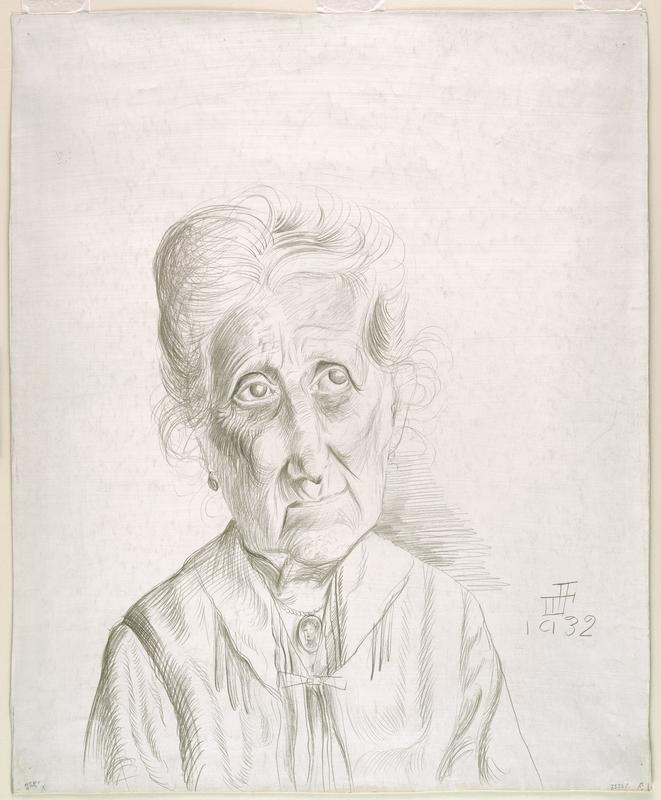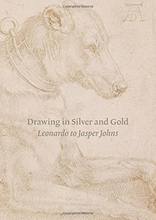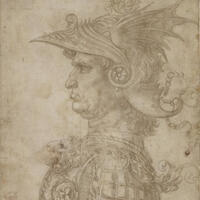More about Old Woman
- All
- Info
- Shop

Sr. Contributor
Otto Dix was more than just a little bit old school.
As an artist, it’s totally normal and even expected to study the greats who have come before you. Some artists, like Dix in particular, take this veneration to the next level. In the late 1920s, Dix began to study the art of Renaissance and Old Master painters. He was so infatuated with these artists that his friend and fellow German Expressionist George Grosz jokingly called him “Otto Hans Baldung Dix” after the German Renaissance artist Hans Baldung. He no doubt would have learned that artists like Leonardo da Vinci enjoyed creating silverpoint sketches. Dix also had the advantage of being in the collegial, experimental environment of academia. From 1927 to 1933, he taught painting at the Dresden Academy of Art, where he took advantage of trying new things just for the experience. After meeting yellow painting and techniques nerd Kurt Wehlte, Dix discovered the joy of toying with traditional yet impractical techniques like silverpoint.
To create a silverpoint drawing, an artist uses thin pieces of silver wire placed in a wooden stylus to create marks on a prepared piece of paper. Before graphite became easily accessible, artists drew with pieces of metal, like silver, gold, copper, tin, and lead. It is thought that this method originated as a way for medieval scribes to create illuminated manuscripts that glowed and glittered because of the metals that they used. Unlike easily smudgeable graphite drawings, silverpoint is a very enduring medium. However, nothing can be erased, so this medium is not for the faint of heart.
Dix’s use of silverpoint is a testament to his personality. He explored the medium for over a decade and produced over two hundred of these hard-to-make drawings. As a committed artist and war veteran, Dix was no softie. After fighting in World War I, Dix was staunchly against any war, a point of view that forced Hitler to remove him from his teaching post at the university. Dix sought to portray the social and political realities of life during the Weimar Republic and its inherently violent and ugly character. During his exile in the countryside, he felt a kinship with German Renaissance artists, like Holbein and Dürer, who both utilized silverpoint. Even as photography became the favored medium for portraiture, Dix continued to make portraits using old-school mediums like paint and silverpoint. His outlook on life became a bit more positive as more time passed between him and the war. His work from the 1930s to the 1960s softened a bit. Although he is best known for his disturbing images of the horrors of war, this is a surprisingly tender portrait of an old woman. Perhaps this small bright spot in his work betrays a bit of hopefulness hidden underneath his tough exterior.
Sources
- Museum of Modern Art. “Otto Dix.” Art and artists. https://www.moma.org/artists/1559. Accessed 23 May 2021.
- Museum of Modern Art. “Otto Dix.” German Expressionism. https://www.moma.org/s/ge/collection_ge/artist/artist_id-1559.html. Accessed 23 May 2021.
- Portraits, Inc. “The Art of Silverpoint Drawing.” Blog. https://portraitsinc.com/blog/The+Art+of+Silverpoint+Drawing/. Accessed 14 May 2021
- Tate. “Five things to know: Otto Dix.” Art & artists. https://www.tate.org.uk/art/lists/five-things-know-otto-dix. Accessed 14 May 2021.
- The British Museum. “drawing.” Collection. https://www.britishmuseum.org/collection/object/P_2015-7103-1. Accessed 14 May 2021.













